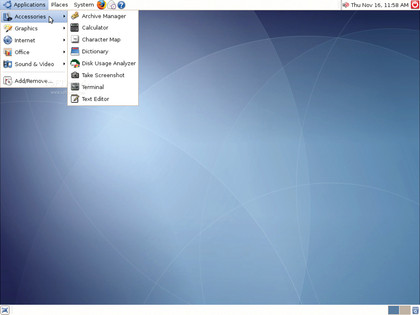The history of Linux: how time has shaped the penguin
A nostalgic look back at Linux, its distros and its colourful history
From this came a two-way split - Red Hat Enterprise Linux 2.1 was born, with kernel 2.4.9, more stability and long-term support for the enterprise user, and the Fedora Core for the community distribution.
With RHEL being open source, Red Hat makes the source code available freely on its FTP servers, which several groups downloaded and compiled to their own distros. CentOS, Oracle Linux, CERN and Scientific Linux are notable examples of such distros - all the goodness of a well-built distro, but without access to the mighty Hat's expert knowledge and software.
December of 2002 saw the release of a notable distro, CRUX. With special emphasis on the 'keep it simple' theme that had become popular during this time, CRUX was extremely lightweight and focused on the developer as opposed to the end user.
In a time when Linux distros were starting to grow exponentially, and vied for the position as the replacement for Windows, CRUX took a different look and thinned itself down to the bone, becoming a welcomed minimalist distro.
What's notable about CRUX, though, is the fact that it was the inspiration and base for Arch Linux.
With kernel 2.4 doing so well, version 2.6 was announced on 18 December. With it came support for PAE, new CPUs, improved 64-bit support, 16TB filesystem sizes, EXT4 and more.
As the Linux distro was now approaching an almost Zen-like harmony with user and PC, it was still deemed as being distant to those users who preferred the flavourings of Microsoft. Therefore, a new philosophy was needed - something that would make Linux more human, and show more humanity, something Ubuntu.
Get daily insight, inspiration and deals in your inbox
Sign up for breaking news, reviews, opinion, top tech deals, and more.
Based on Debian, Ubuntu's aim was to create an easy-to-use Linux desktop that could be updated to include the latest offerings by the end user with very little experience in Linux. With the release of Ubuntu 4.10, the Warty Warthog, on 20 October, 2004 this dream was realised.
2006 to 2012
The rise and fall of Ubuntu

And so, we approach the present day. Some things have started to stabilise, but we've also seen an explosion in the number of distros. Despite the onslaught, the old stalwarts have remained strong.
Of the many differing distros that were launched from 2006 onwards, one has become the fourth most-used operating system in the world, and is regarded as the most popular Linux, according to various sources.
Linux Mint 1.0, Ada, was released in 2006 with a heady mixture of FOSS and proprietary software. This 'works-out-of-the-box' Linux distro briefly followed the Ubuntu base and later the Debian base as well.
Linux Mint has adapted itself to embrace, and offer, the newest technologies while still keeping an ear to the ground and listening to its users, hence the massive support for this great distro.
KDE4 was released, and was met with some criticism due to the lack of stability, with Linus himself stating that KDE 4.0 was a "break everything" and "halfbaked" release. However, users began to enjoy the Plasma desktop, and the cutting-edge look and feel, so that by the time KDE 4.2 was released in 2009, everyone had forgotten about the terrible experience they had previously. What a fickle bunch we are.
23 September saw the release of one of the most popular Linux-based operating systems ever, although 90% of its users have no idea that it's Linux-based at all. That OS is Android.
Version 1.0 was launched with the HTC Dream and could do everything you'd expect from a modern smartphone, but it was buggy. Version 1.1 fixed most of the bugs, but it wasn't until version 1.5 Cupcake that Android really started to get interesting and pave the way for smartphones the world over.
Ubuntu had gone from strength to strength during this time. It was regularly at the top of the Linux charts, it had a huge fanbase and it was easy to use.